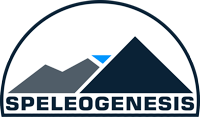3D Modelling (geometry and connections) of carbonate massifs in structurally complex areas : An application to buried karst reservoirs of Languedoc (South France)
Karstic reservoirs offer new opportunities to secure water resources in the populated and arid regions, such as the Mediterranean. Karstified Jurassic carbonate massifs presently buried beneath Cenozoic cover have been studied in the south of France by BRGM, and more recently by Husson (2013)
Objective
The objective is to develop a method to determine the 1) distribution, 2) connectivity and 3) intensity of karstification of the carbonate massifs, including buried karsts. The study area (Languedoc) incorporates the previous (Husson, 2013) study and extends south-westward, i.e. downstream of the watershed. This study area is well suited for developing and validating the method (good data coverage & known geodynamic evolution), which can then be exported, especially in Mediterranean region.
Operations
1- Construction of a 3D geological model of this poly-deformed area; the model will include all geological information concerned with the (paleo)karsts and (paleo) base-level indicators. Surface geology, 2D seismic reflexion, exploration borehole data, gravimetry will be compiled and integrated, within the BRGM-Intrepid “Geomodeller”. While building the geomodel, tests of consistency of 2D restoration of random lines (using Schlumberger-Igeoss “Dynel2D”) will provide a validation of the geomodel. Additionnal validation will be secured by gravity inversion of the geomodel and comparison with available measured gravity data.
2- Sequential 3D restoration of the geomodel, at successive times of documented karstification (Messinian, Late Miocene, Early Paleocene, Mid-Cretaceous), using Schlumberger-Igeoss “Dynel3D”. Restoration will provide for each period : the flow-lines within the massifs from upstream topography towards the outlet, whether it is surficial (over impervious formations) or karstic (through carbonate massif) drainage. Karstified and non-karstified (above and below base-level, respectively) carbonate massifs will be delineated within the restored geomodels, for each karstification periods.
3- These paleo-base levels, obtained at the different stages of karstification will be input in the present day geomodel, in order to determine the distribution of karstified portions of the carbonate massifs (located above paleo base-level). The output will be the volume of potentially karstified massifs and the distribution of superimposed karsts, the later being an indication of increased karstification.
4- Gravity inversion of the 3D geomodel (with BRGM-Intrepid “Geomodeller”) provides density distribution. We suggests that lower density values within the carbonate formations, correlate with karstified areas. The gravity inversion results will be analysed (qualitatively & quantitatively) and correlated with the distribution of karstified massifs derived from the previous stage.
5- The findings will be analysed and tested in the light of regional hydrogeological data.
Applications:
- Exploration of karst reservoirs (water, oil & gas, mining industry)
- Management of karst reservoirs (water supply, hydrothermal resorts, gas storage, geothermy)


